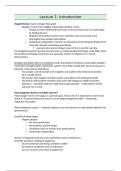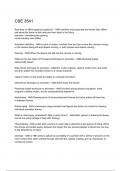Class notes
Lecture notes for the Science of Happiness course () UU
- Course
- Institution
These are notes from all 8 Science of Happiness (SOH) courses at the UU, written in English. These are notes from all 8 lectures of the Science of Happiness (SOH) course at the UU. noted in English.
[Show more]




